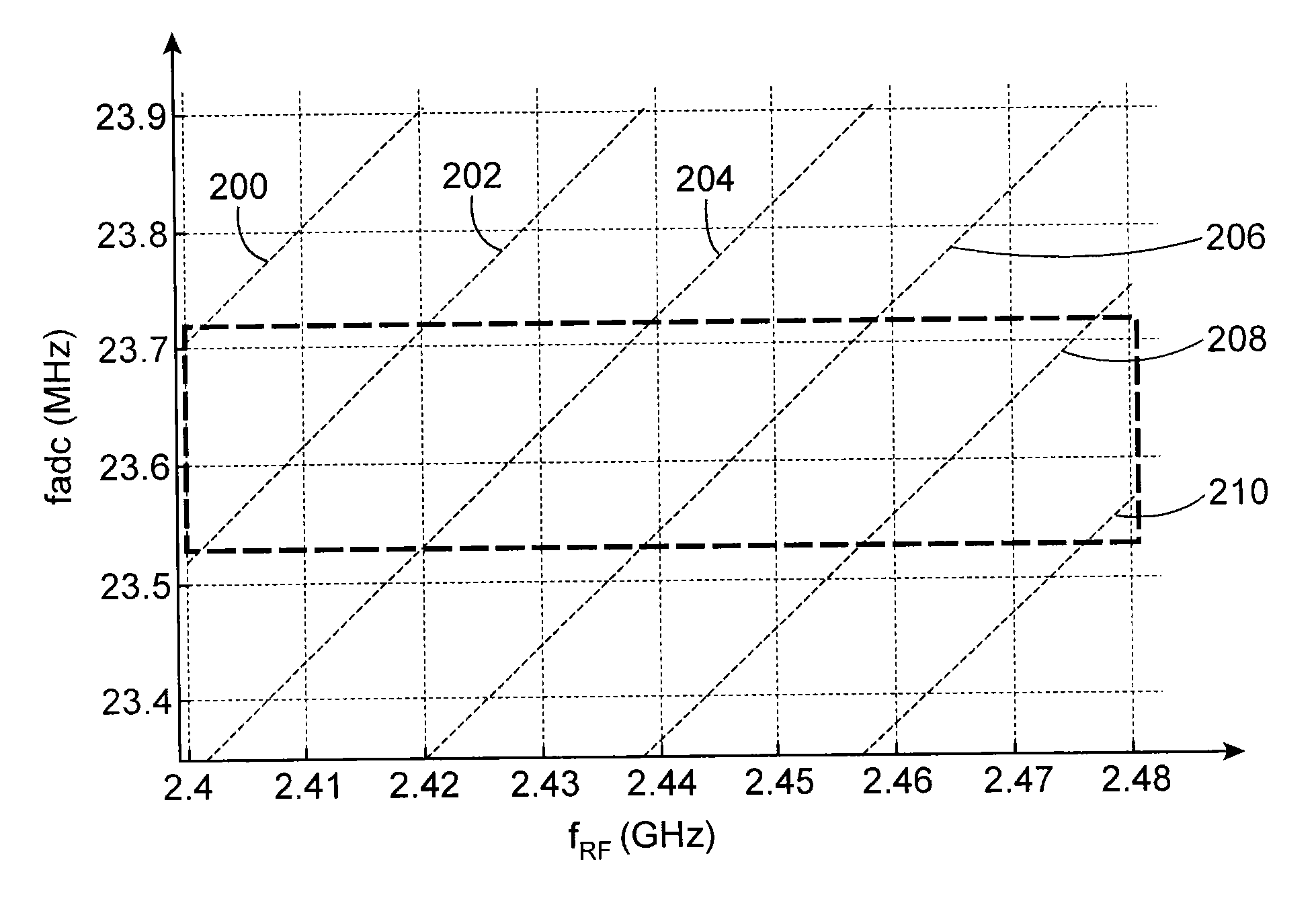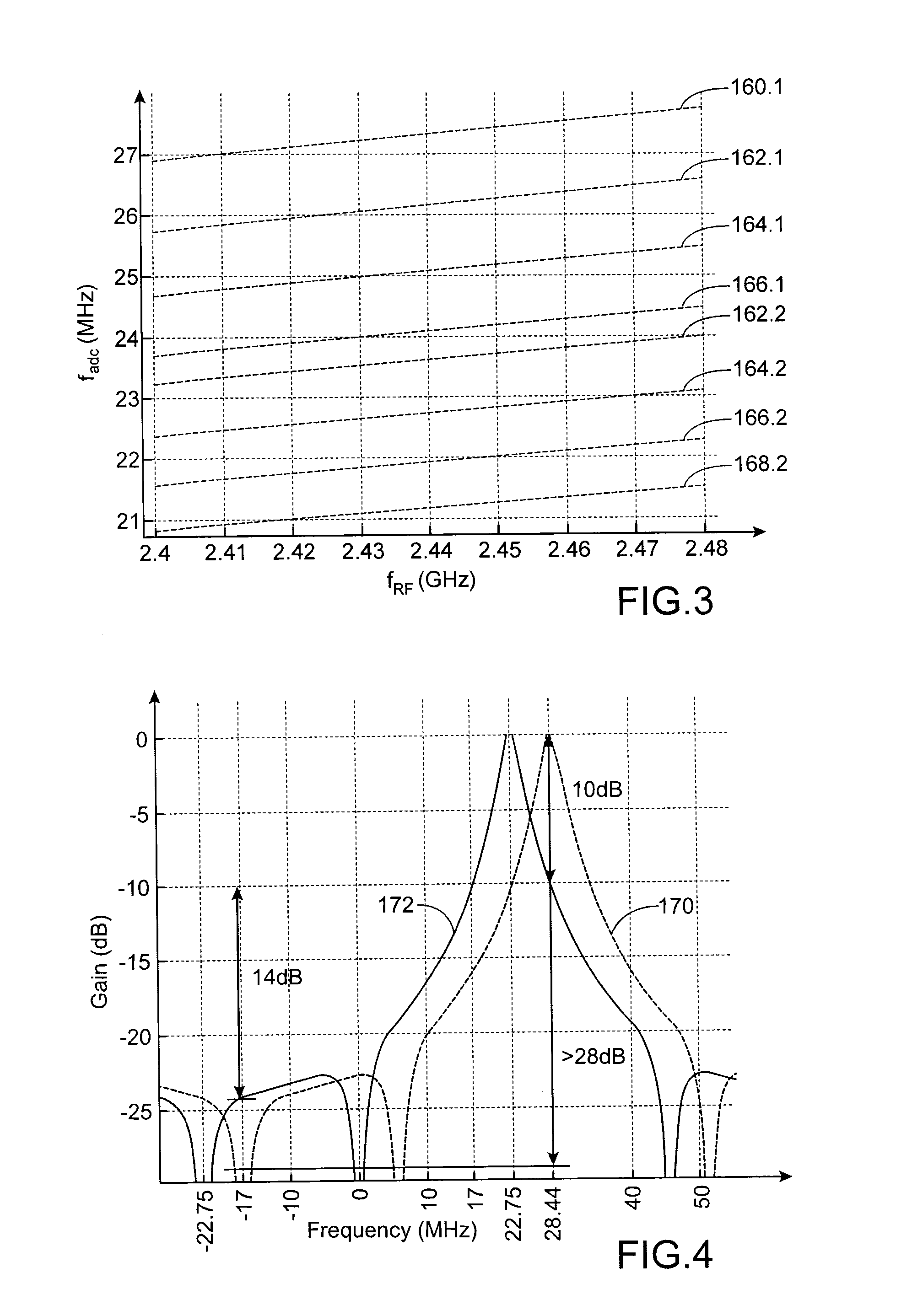Device and method for receiving RF signals based on heterodyne architecture using complex if subsampling
a heterodyne architecture and heterodyne technology, applied in the field of rf receivers with sampled architectures, can solve the problems of aliasing of baseband noise, distortion of signal, and inability to reduce receiver's electrical consumption significantly, so as to achieve less loss in filtered signals and less sensitivity
- Summary
- Abstract
- Description
- Claims
- Application Information
AI Technical Summary
Benefits of technology
Problems solved by technology
Method used
Image
Examples
Embodiment Construction
[0068]The present invention will be better understood on reading the description of example embodiments given purely as an indication and in no way restrictively, making reference to the appended illustrations in which:
[0069]FIG. 1 represents an RF reception device, object of the present invention, according to a particular embodiment,
[0070]FIG. 2 represents the variations of IF1 as a function of fRF, K and N in an RF reception device, object of the present invention, according to a first example embodiment,
[0071]FIG. 3 represents the variations of fadc as a function of fRF, K and N in the RF reception device, object of the present invention, according to the first example embodiment,
[0072]FIG. 4 represents bandpass filtering functions obtained by IIR filters one of which forms part of the RF reception device, object of the present invention, according to the first example embodiment,
[0073]FIG. 5 represents the variations of IF1 as a function of fRF and K in an RF reception device, ...
PUM
 Login to View More
Login to View More Abstract
Description
Claims
Application Information
 Login to View More
Login to View More - R&D
- Intellectual Property
- Life Sciences
- Materials
- Tech Scout
- Unparalleled Data Quality
- Higher Quality Content
- 60% Fewer Hallucinations
Browse by: Latest US Patents, China's latest patents, Technical Efficacy Thesaurus, Application Domain, Technology Topic, Popular Technical Reports.
© 2025 PatSnap. All rights reserved.Legal|Privacy policy|Modern Slavery Act Transparency Statement|Sitemap|About US| Contact US: help@patsnap.com



